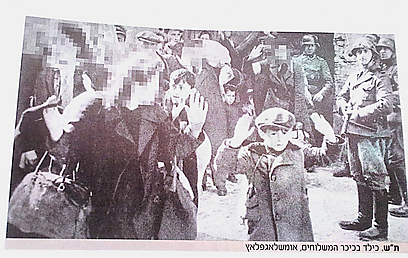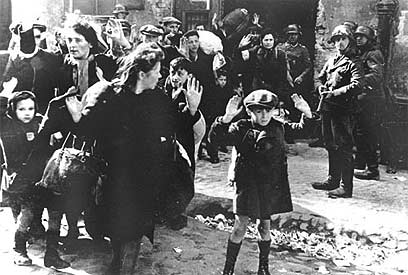
One of the most famous pictures marking the atrocities of the Holocaust, was published in the haredi newspaper Bakehila (literally meaning -- in the community), with the faces of all the women censored.
The picture, featuring a Jewish boy in holding his hands up in submission, depicts the surrender of Jews after the Warsaw Ghetto Uprising, some 70 years ago.
Most of the Jews in the picture were eventually sent on to extermination camps, including the women, among them Matylda Lamet Goldfinger, whose infant daughter was killed a short while after the picture was taken.
The picture, published in the holiday supplement of the newspaper, accompanied an interview with Aryeh Simonson, who said he was the boy in the photo, after years of investigation into the boy’s identity.
In the interview, Simonson discussed the moments of horror he endured before, during and after the picture was taken, in the face of the horrors inflicted by the Nazis.
'No reason to publish entire photo'
Referring to the censorship of women's faces, the editor of the Bakehila weekly, Avraham Dov Greenbaum told Ynet, “The article focused on the subject of the photo, and thus there was no reason to publish the entire photo. We wanted to emphasize the story of the helpless boy. At the same time, we respect the memory of the Holocaust victims, and… also respect our readers, bringing them only what they need and want to see.”

The censored photo

The original photo (Photo: AP reproduction)
Daily newspapers in the haredi sector work under the direction of "spiritual commission," an ancient tradition that does not allow the publication of photos of women.
- Receive Ynetnews updates
directly to your desktop















